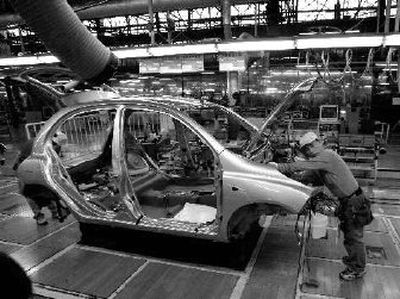Japanese automakers reinvest in home production

TOKYO — At a time when Detroit’s “Big Three” are closing plants and slashing jobs to revive their ailing business, their Japanese counterparts are busy opening plants in Japan for the first time in decades.
That’s because there’s strong demand for fuel-efficient small cars such as the Toyota Yaris and Honda Fit — all of which are made in Japan — as well as luxury models and hybrids, most of which are made here.
But there’s also a shift away from the conventional wisdom that automakers are best off making cars in the same region where they sell.
Toyota, Nissan and Honda realize that the roots of their success lie in the management and production strategies developed and honed at home — from outstanding quality control to their extensive supplier networks — and that expanding in Japan may be the smartest way to meet demand for certain types of vehicles.
“It doesn’t make sense to produce everything abroad,” said Tsuyoshi Mochimaru, auto analyst with Deutsche Securities in Tokyo. “The idea is that rethinking quality begins in Japan.”
Thierry Viadieu, a Nissan executive who has overseen alliances, said the plant openings in Japan mark a new stage of growth from earlier decades when the main goal was simpler: Get out of Japan to produce cars where they’re being sold.
These days, he said, multinational manufacturers need to be sophisticated in their production strategies, coordinating output among their far-flung plants, amid increasingly intense competition.
Nissan, for example, imports all of its Infiniti luxury models sold in North America from Japan — and for now, that make sense, said Nissan Chief Operating Officer Toshiyuki Shiga.
“We don’t start out with the idea that we need plants in Japan,” Shiga said. “Each plant taking up the challenge leads to Nissan’s overall competitiveness.”
Kazuo Aoki, general manager at the Union of Japanese Scientists and Engineers, an organization that promotes technology, said the fundamentals of ensuring quality are based in Japan, which boasts top-notch parts suppliers and steelmakers.
“It’s still best to produce domestically those cars with extra value,” Aoki said. “But what you want to avoid is friction with nations, where the cars get exported.”
In the 1980s and 1990s, Japanese automakers busily set up plants abroad, including North America, to cut costs and blunt the “Japan-bashing” among some Americans who blamed them for the loss of U.S. jobs.
Some U.S. legislators have revived complaints about Japan’s success at the expense of American manufacturers. United States Sen. Debbie Stabenow, D-Mich., who represents thousands of Detroit-based auto workers, has said that the Japanese have an unfair edge from a weak yen, which makes it easier to underprice American rivals.
Such complaints have struck a sensitive nerve for some Americans worried about the fates of U.S. auto companies, which are slashing jobs and shuttering plants.
General Motors Corp. lost $10.4 billion in 2005 but underwent massive restructuring and trimmed its losses to $2 billion in 2006. Ford Motor Co. lost $12.7 billion last year.